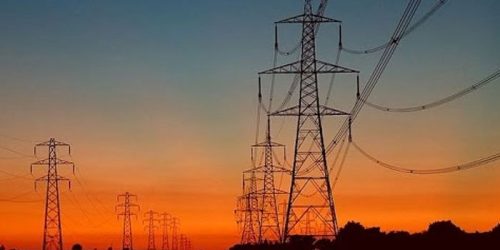ISLAMABAD: In another positive development, the Chinese authorities have also indicated to Pakistan’s top notches that they would also review the power purchase agreements (PPAs) of the independent power producers (IPPs) installed under China Pakistan Economic Corridor (CPEC) umbrella keeping in view the rising circular debt and other power sector financial woes adversely impacting the country’s economy, a senior top official at Power Division told The News.
The official said the coal-based Port Qasim Power Plant, Sahiwal Power Plant, Hubco Power Project, Hub Balochistan, Engro Thar and UEP wind power plant have been installed under CPEC and their agreements will be discussed with Chinese authorities to get maximum concessions in agreements. The said projects were set up under the 2015 power policy with 15 percent rate of return plus the US dollar indexation.
The official said Pakistan will engage the Chinese authorities on the government to government level for maximum relief in the PPAs once the finalisation of the agreements with the IPPs established under various power policies are completed and signed. Shahzad Syed Qasim, Special Assistant to Prime Minister on Power sector, told The News once the MoUs signed with IPPs and Gencos, RLNG-based power plants, Wapda hydro projects set up under power policies 1994 and 2002 and its impact on end consumers are finalised, then government will initiate talks with Chinese government for required changes in plants installed under CPEC umbrella. However, he avoided sharing further information terming it is a sensitive issue.
Qasim said the government has decided to reduce the profits of three Gencos: Jamshoro, Muzaffargarh and Guddu and other smaller government power plants from 15 and 16 percent to 10 percent. The government will also reduce the rate of return of hydropower projects owned by Wapda to 10 percent.
The four RLNG-based power plants set up at Bulloki, Haveli Bahadur Shah, Bhikki and Trimmu will be privatised with a rate of return of 12 percent, not the 10 percent, just to incentivise the expected buyers and to this effect. The SAPM on Power Sector said he would pitch the proposal in the ECC and then cabinet for approval in consultation with Privatisation Commission.
Qasim said that the changes in PPAs are being made with mutual consent between the government and IPPs. The government has decided not to make arbitrary changes in PPAs with IPPs to avoid any penalty from London Court of International Arbitration (LCIA) as h in the past.
He said that the government signed MoUs with seven IPPs established under the 1994 policy and 12 IPPs set up under the 2002 policy. The government wants to bring down the tariff and once the final agreements are signed with all the IPPs and government projects, then the impact would be determined when it gets included in tariff order. However, the impact in the shape of relief to end consumers will be sizable, Qasim hoped.
About the salient features of MoUs signed with IPPs installed under the 2002 power policy, instead of 15 percent profit with US dollar indexation for local IPPs, they will now get 17 percent profit with Pak rupee indexation. However, for foreign-funded IPPs, the profit would stay with US dollar indexation, but it will be reduced from 15 percent to 12 percent depending upon the power policy under which they were installed. He said the past dues of IPPs running into billions of rupees will be paid in installments but within a mutually agreed time frame signed with IPPs prior to the final agreements.
Qasim also said that the agreements based on take or pay mode will be converted to take and pay mode if the country has a competitive market system with multiple buyers of IPPs electricity. He said that the government will take two to two and half years to open the power sector market and turn it into a competitive market with multi-buyers. He also said that under the signed MoUs, IPPs running on oil and gas will share the savings in fuel and efficiency.
And in the head of O&M, any savings in O&M will be shared on a 50:50 basis after accounting for any reserves created, or to be created, for major overhaul. This would be reviewed by power purchaser or Nepra as mutually agreed. The late payment surcharge (LPS) will be lowered from current Kibor + 4.5 percent to Kibor + 2.0 percent. The IPPs which are still in a debt trap will be provided extension in debt tenure to ease their debt servicing.
About the MoUs signed with IPPs under the 1994 power policy, the existing capacity payments and variable O&M will be sliced down by 11 percent. According to the MoU copy available with The News, the USD exchange rate and US CPI indexations will be discontinued on 50 percent of the reduced capacity payment, which shall be fixed at National Bank of Pakistan’s TT/OD selling PKR/USD exchange rate prevailing as on August 12, 2020 without any local or international currency indexation or inflation adjustment for the future. Furthermore, in lieu of the tariff reductions hereinabove, any heat rate sharing by any IPP as per its existing arrangement shall cease to exist. The USD exchange rate and US CPI indexations on reduced variable O&M and 50 percent of the reduced capacity payment shall continue in accordance with the existing arrangement. The parties shall look into the possibility of termination of plants considering their’ commercial and technical viability. Also the parties acknowledge that the IPPs predate the creation of the Nepra regime.





